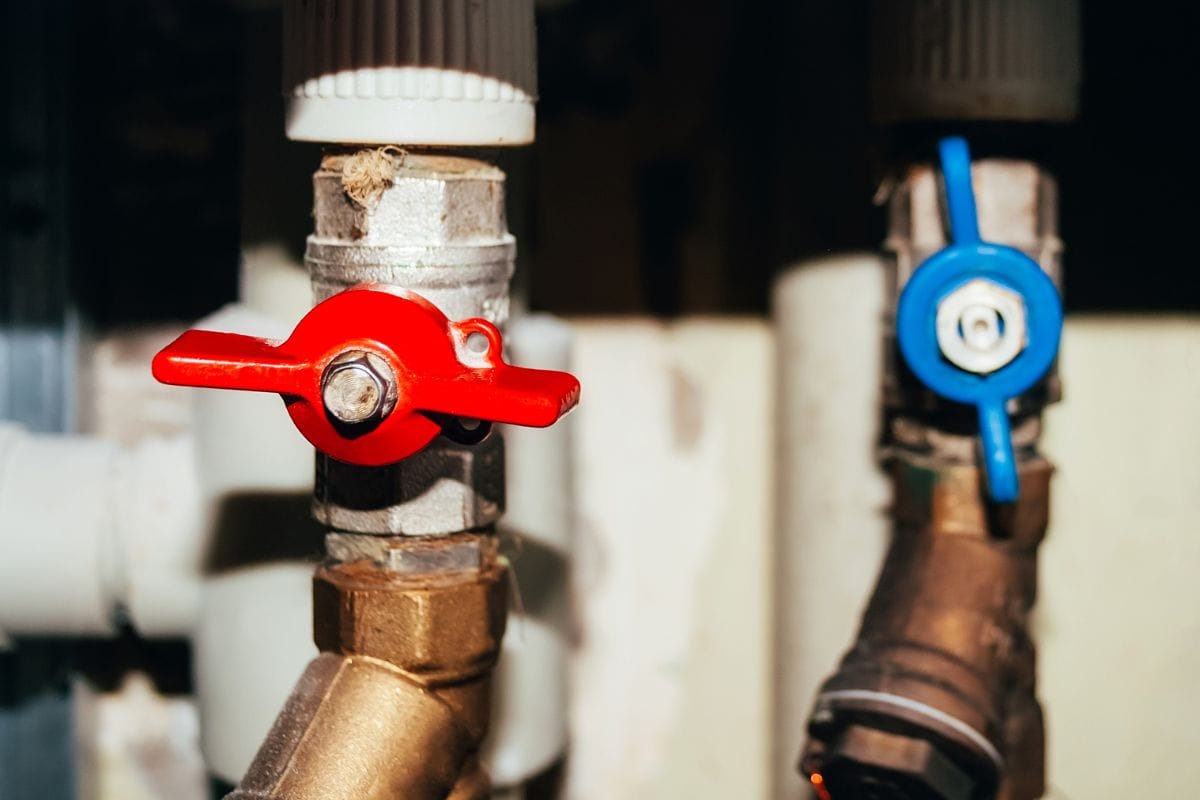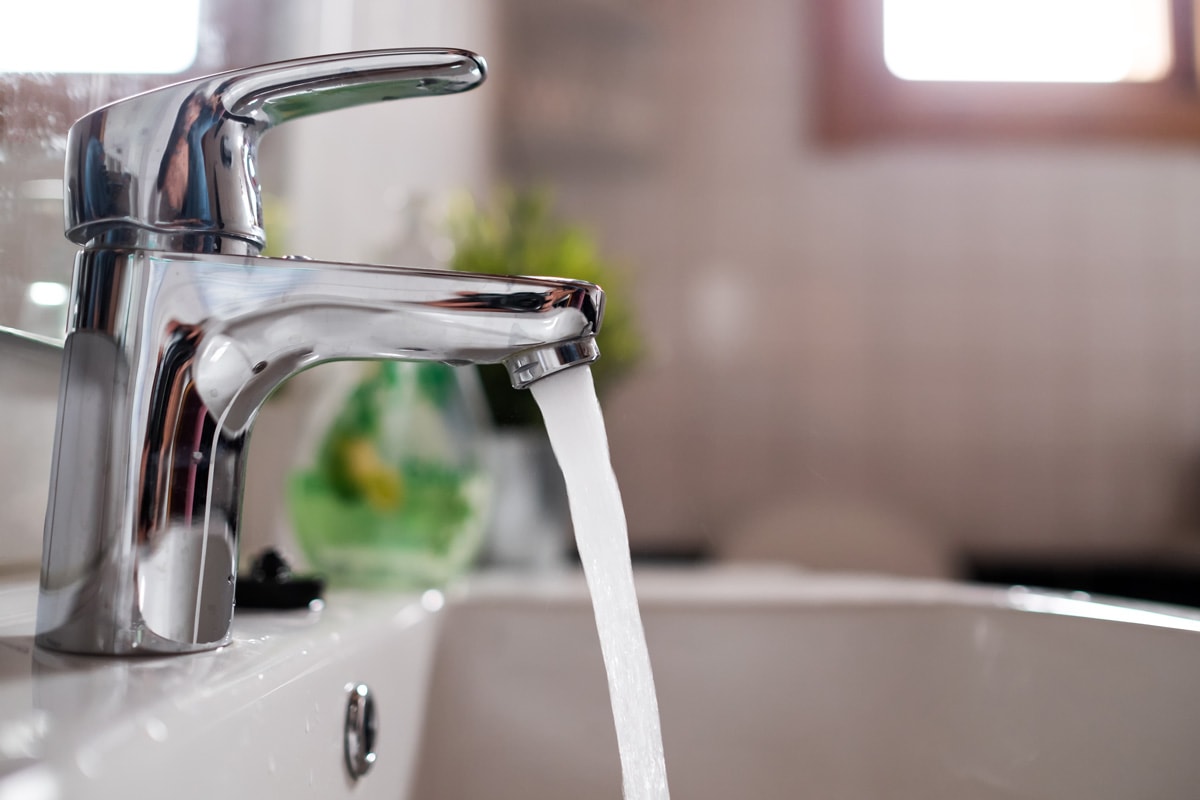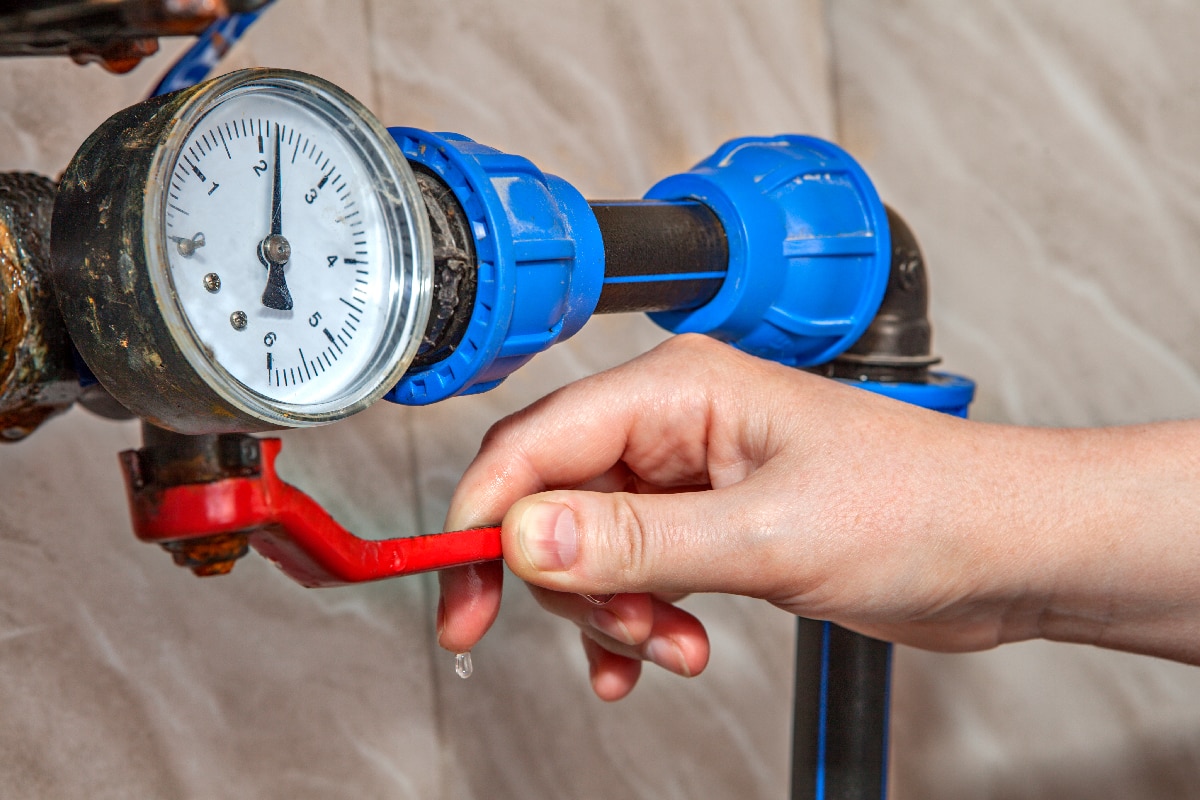Making sure the cold water lines in your house are clean is an essential task for maintaining your overall health and well-being.
Over time, contaminants such as bacteria, sediment, and minerals may build up in your water lines. This can lead to issues like poor water quality and even illness. Don't worry, by following a few simple steps, you can ensure safe and clean water throughout your home.
First, you need to study your home plumbing system. Once you grasp this, you can implement various methods to clean your cold water lines.
From flushing the system to using proper disinfection procedures, these techniques will help you achieve optimal water quality and protect you and your household from potential health risks.
Understand Your Cold Water System
To begin tackling this household task, it's important to understand your home's plumbing system.
Familiarizing yourself with the main components, such as the water main, supply lines, and shut-off valves, will prove useful during the cleaning process.

This knowledge will not only help you identify potential trouble spots but also allow for more efficient and effective cleaning.
You might also like: Cracking the Frozen Code: Why Do Hot Water Pipes Freeze First?
Main Water Supply
Your home's cold water supply begins at the main water line, which is either connected to a municipal water source or a private well.
It's essential to know where the main water shut-off valve is located in case of emergencies, such as a burst pipe or necessary maintenance.
In most cases, the main shut-off valve will be found near the point where the water line enters your home.
Understanding your water supply source can help you address potential water quality issues.
For instance, well water may require additional testing and treatment to ensure its safety and quality, while municipal water is usually already treated and regulated by local authorities.

Cold Water Pipes
Cold water pipes deliver water to various fixtures and appliances throughout your home, such as sinks, toilets, and washing machines.
These pipes are typically made of materials like copper, PVC, or PEX. It is essential to inspect these pipes regularly for signs of corrosion, leaks, or damage that may affect water flow and quality.
To clean and maintain your cold water pipes, consider the following tips:
- Insulate your pipes to protect them from freezing temperatures and reduce the risk of bursts.
- Regularly check for signs of leaks or damage, such as damp spots or discolored water.
- In the case of a well system, consider water well maintenance and rehabilitation methods to address potential issues.
Be sure to check out: Copper Pipe 101: What Type Of Copper Pipe Is Best For A Hot Water Heater?
Prepare for Cleaning
Before starting to clean the cold water lines in your house, it's essential to gather the necessary supplies and ensure your safety.
Start by assembling the required tools and materials, including a pipe wrench, bucket, and disinfectant solution such as sodium hypochlorite.
Check out this popular KOTTO heavy-duty pipe wrench set on Amazon.
Remember that wearing appropriate protective gear is crucial.
Put on gloves, eye protection, and long sleeves or protective clothing to minimize the risk of exposure to chemicals or bacteria while cleaning and disinfecting the water lines.
Next, it's a good idea to shut off the water supply to your house to prevent any water flow during the cleaning process.
Locate the main water shut-off valve and turn it off. This step may also help reduce potential water damage in case of any leaks during the process.
Finally, prepare the disinfectant solution according to the manufacturer's instructions. Be sure to mix the solution in a well-ventilated area and follow any safety precautions indicated on the product label. Store any leftover solution away from children and pets.
Turn Off the Water Supply
Before beginning to clean your cold water lines, it's essential to turn off the water supply. Locate the main shut-off valve in your home.
Typically, you can find it in your basement, crawl space, or near the area where the water line enters your house.
If you're unsure, try looking near your water heater, since the main shut-off valve is often nearby.

To turn off the valve, you must rotate a wheel-shaped handle clockwise or a lever handle perpendicular to the pipe.
If it's challenging to turn, try using pliers or a wrench to get a better grip. Once you have turned off the valve, open up a faucet at the lowest point of your home to release any remaining pressure and water.
Now that the water is turned off, you can proceed to clean your cold water lines without any risk of water damage or flooding.
Drain Cold Water Pipes
Once the water supply is off, open all the cold water taps throughout your home. Don't forget to include faucets in the kitchen, bathroom, and laundry room, as well as outdoor spigots.
As you open the taps, air will enter the pipes, allowing the water to flow out more easily.
Now, you'll need to locate the lowest faucet in your home, which is often an outdoor spigot or a faucet in the basement. Open this faucet and let the water drain out until no more water is coming out.
Once you've successfully drained your cold water pipes, close all the faucets starting with the lowest one. This will prepare your pipes for the next step in the cleaning process.
Learn more: Can Plumbing Pipes Be Exposed? [Pros And Cons Explored]

Inspect Pipes for Debris and Blockage
Inspect your pipes for debris and blockage regularly. Here's a how to do it.
- Turn off your home's main water supply to avoid water flow while inspecting the pipes.
- Locate the main shutoff valve and turn it off. This will ensure that you won't have any water running through your pipes, making it easier and safer for you to inspect them.
- Inspect the visible pipes in your home for signs of blockage or accumulated debris. Look for areas where the pipe may be clogged, such as bends or connections.
Keep an eye out for rust, mineral buildup, or other obstructions that could be affecting your water flow. If you see any of these issues, take note of their location so you can address them later.
In addition to visually inspecting your pipes, listen for any unusual sounds, like gurgling or bubbling, which may indicate a blockage. If you hear any strange noises, try to pinpoint their location and investigate further.
Once you've identified any problem areas, you can take steps to clear the blockages and ensure smooth water flow in your cold water lines.
For minor blockages, you may be able to clear them using a plumber's snake or by carefully flushing the affected area with water.
For more severe issues, you might need to contact a professional plumber to have them assess the situation and recommend a course of action.
Flush and Clean Pipes
Over time, sediment and mineral deposits can accumulate in your pipes, affecting the taste and quality of your water.
Flushing and cleaning your pipes periodically can help to address these issues. In this section, we will discuss how to flush and clean your pipes using two common household products: vinegar and bleach.
Using Vinegar
Vinegar is a friendly, non-toxic solution that removes sediment and mineral deposits from your water lines. To clean your pipes using vinegar, follow these simple steps:
- Turn off your main water supply to prevent new water from entering the pipes.
- Drain your pipes by opening all faucets and flushing toilets.
- Fill a bucket with a 50/50 mixture of white vinegar and water.
- Disconnect the cold water supply line at its nearest shut-off valve.
- Using a funnel, pour the vinegar solution into the open end of the water line.
- Leave the solution in the pipes for at least 30 minutes to allow it to dissolve the deposits.
- After the waiting period, reconnect the water line and turn the main water supply back on.
- Flush the pipes by running water through all faucets and flushing toilets until the vinegar smell is gone.
Try this 45% concentrated vinegar on Amazon.
Using Bleach
Bleach can be used as an alternative to vinegar for cleaning and disinfecting your cold water lines. The following steps outline how to use bleach to clean your pipes:
- Turn off your main water supply to stop water flow into your home.
- Open all faucets and flush toilets to drain water from your pipes.
- Mix a solution of 1 gallon of water with 1/4 cup of unscented bleach.
- Disconnect the cold water supply line at its nearest shut-off valve.
- Pour the bleach solution into the open end of the water line using a funnel.
- Allow the solution to sit in the pipes for at least 30 minutes to kill any bacteria and dissolve deposits.
- Reconnect the water line and turn the main water supply back on.
- Flush the pipes by running water through all faucets and flushing toilets until the bleach smell disappears.
Try this all-purpose bleach cleaner on Amazon.
Remember to exercise caution and wear protective gloves when handling bleach to ensure safety.
Reassemble and Test the System
Once you have finished cleaning the cold water lines, it's time to put everything back together and test the system.
First, reconnect the water main valve, ensuring its connections are secure.
Gently open the valve and allow the water to flow back into the cold water pipes slowly. This gradual increase in pressure helps to prevent any damage or leaks within the system.
You might also like: Should I Turn Off My Water Heater If Pipes Freeze?

After the water is flowing smoothly, proceed to turn on all the faucets one by one. Don't forget about the outdoor taps, as these can also be affected by the cleaning process.
Starting with the faucet closest to the water main and working your way to the faucet furthest away, allow the water to run for a few minutes at each location.
This helps to flush out any remaining debris or cleaning solution that might still be inside the pipes.
While the water flows through the pipes, carefully inspect each faucet for any signs of leaks or unusual noises. If you notice anything out of the ordinary, don't worry. It's likely that the issue can be resolved by tightening a connection or replacing a worn part.
Additionally, you might notice that the water initially appears cloudy or discolored. This is normal, as some residual air might be trapped in the system or small amounts of sediment could still be present.
The water should clear up after running for a few minutes, resulting in a clean, fresh supply for you and your family.
Lastly, don't forget to check your water pressure. You can use a pressure gauge that attaches to your hose bib or an adapter on indoor faucets.
This step ensures that your water pressure is within the appropriate range, delivering optimal performance from your plumbing system.
home Water line Cleaning should be a regular process
Keeping your cold water lines clean is essential for maintaining the overall water quality in your home.
By following the proper maintenance and cleaning procedures, you'll protect your family from potential health risks and ensure a steady supply of clean water.
Maintaining the cleanliness of your cold water lines isn't just a one-time task—it's an ongoing process. Stay vigilant, test your water regularly, and be prepared to take action if any issues arise.
With some care and effort, you can ensure safe, clean water for you and your family.



